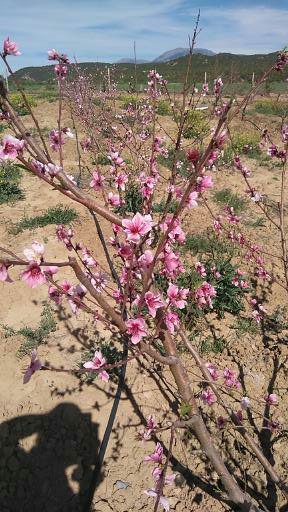
Peaches
Well where to start! I experienced a week or so of life with a berber family at Ribat El Kheir in the Middle Atlas Mountains of Morocco. On route I passed a large commercial Apple Orchard, apparently 200 hectares or so of very closely spaced dwarf trees, all for export. They have many deep wells to support the parched terrain and the workers are paid bonuses, so work very hard I was told.
The peaches were in flower in one of the smaller orchards around me. All the trees in this plot were headed back at about 30cm to make an upright open framework.
My week was very relaxed, looking after a few cows, many types of poultry, rabbits, doves and pigs. And a lot of time relaxing and drinking tea with neighbours….and of course delicious tagines! All food is shared, there are no separate plates, and it is most often scooped up with bread with your right hand. The bread is flat and unleavened in Morocco and made fresh each day. We ate it a lot.The mint tea is very sweet and refreshing in the heat.
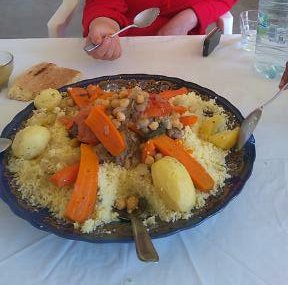
Tagine Dindons!
We also ate omelettes and dipped bread in olive oil, as well as a semolina in a sour milk, butter milk maybe? The daughter made it in a plastic bottle, rolling it on the floor for an hour or so. Also side dishes of sweet broad beans and a fennel paste from the buds of the wild fennel around us.
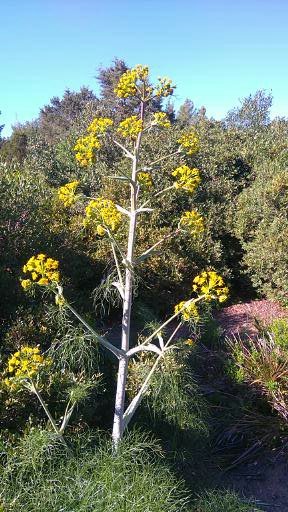
Fennel
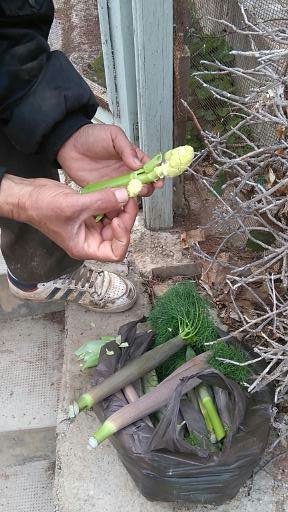
The Berbers lived simply, and ate what they grew or farmed mostly. They had a bottled gas cooker and oven, but no electricity, though new pylons at the end of the farm lane forewarn of a change to come. It was very amusing to see Berber shepherds using mobile phones to communicate with each other across the hill! Samsungs are ubiquitous!
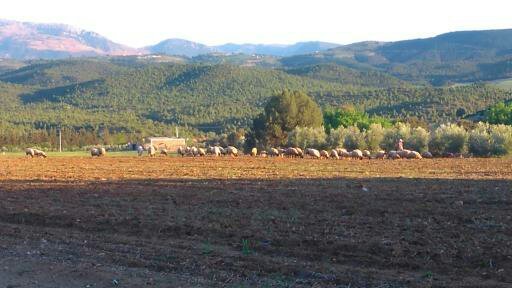
Berber Brebis
A stunning landscape was my daily view, often with these Berber sheep which are kept on the move all day to eek out the few weeds. This field will not be sown because it is too dry this year….incomes are so precarious here! The puit ( well ) is a vital element in life here; the French Colonialists in the 1920’s chose these areas to create commercial farms as they had a reliable source.
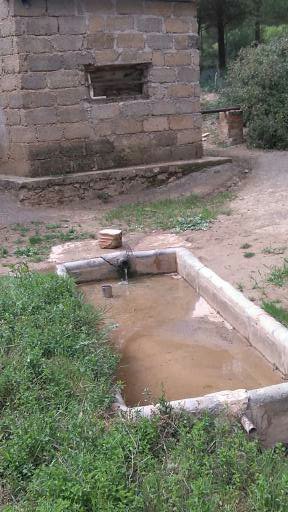
Le Source
I saw these wooden ploughs being used behind mules and oxen in many areas. Such is the contrasting extremes easily seen in this country twixt the traditional ways and modern city life. And so to the city….
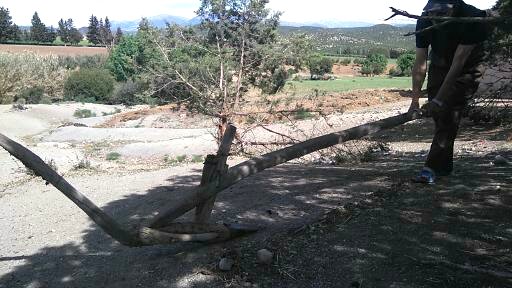
Wooden Plough
